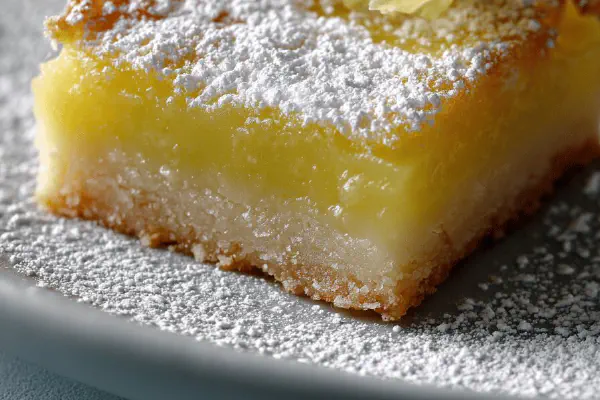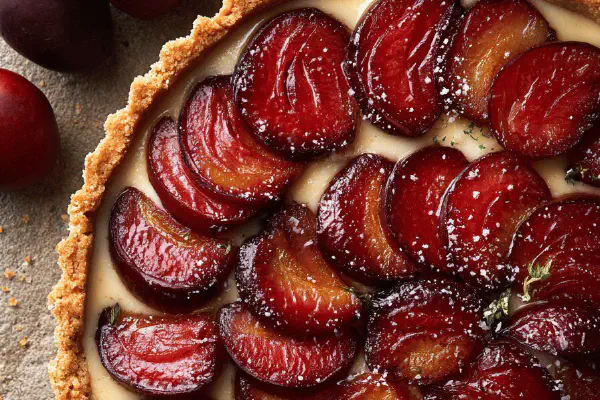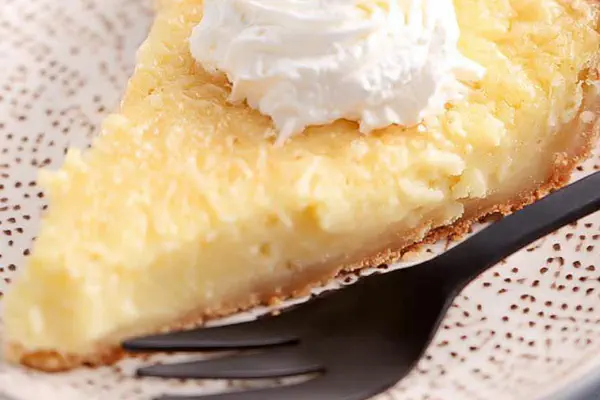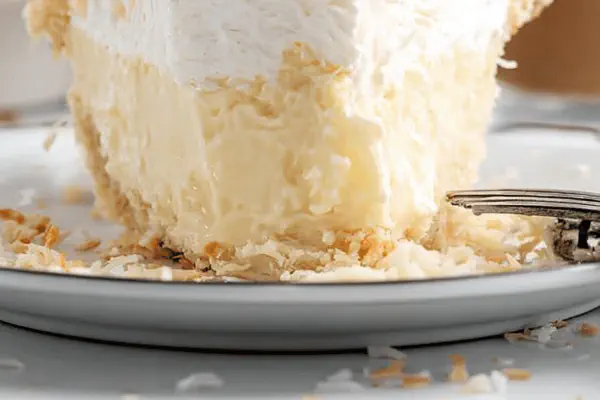Tart Lemon Bars

By Emma
Certified Culinary Professional
Ingredients
Crust
- 270 ml unbleached all-purpose flour (approx 1 1/8 cup)
- 50 ml powdered sugar (about 1/5 cup)
- 2.5 ml baking powder (1/2 tsp)
- 115 ml clarified butter or melted unsalted butter (1/2 cup)
Lemon Filling
- 200 ml granulated sugar (3/4 cup plus 1 tbsp)
- 20 ml cornstarch (about 4 tsp) instead of flour
- 100 ml fresh lemon juice (approx 1/3 cup)
- 60 ml fresh lime juice (about 2 tbsp)
- 2 eggs, room temp
- 60 ml heavy cream 35%
- Zest of 1 lemon
- Powdered sugar for dusting
About the ingredients
Method
Crust
- Set oven rack to middle. Preheat to 175 C (350 F). Line a 23 cm (9 inch) square pan with parchment leaving overhang for easy removal. No greasing; the paper does the job.
- Mix flour, powdered sugar, and baking powder in a bowl. Add clarified butter with fingertips. Use a light touch to work in butter until dough just holds together without being greasy or crumbly. No need to overhandle or it turns tough.
- Press dough evenly into pan base. You want a firm, level layer. If dough resists, chill 5 minutes before pressing again.
- Bake approx 28 minutes until the edges start turning golden but center still pale. Shouldn't brown too much or crust gets dry and crumbly later.
Filling
- While crust bakes, whisk sugar with cornstarch until blended. The starch is key here—stiffer than plain flour, helps custard thicken without turning gritty.
- Add lemon and lime juice, eggs, cream, and lemon zest. Beat until fully homogenous. Watch to not mix in too much air—custard works best slightly dense.
- Once crust comes out, immediately pour filling over hot base. If crust cools, filling won't bind properly.
- Drop oven temp to 160 C (320 F). Bake 22 to 27 minutes. Edges set and barely jiggle center. You'll know by gentle shake.
- Remove from oven. Let cool at room temp for an hour or so—don't rush or filling splits.
- Chill min 4 hours or overnight. Longer chill firms bars for clean slicing.
- Use parchment overhang to lift block from pan. Cut into 36 even squares. Dust with powdered sugar just before serving. The sugar hides tiny cracks and adds hint of sweetness.
Tips & Tricks
- Clarified butter stops soggy crust, lasts longer. No nuts here—easy swap to almond flour in crust if desired.
- Lime juice adds zesty sharpness; try grapefruit or orange zest for citrus twist. Cornstarch avoids graininess common with plain flour in custards.
- Don’t overbake or filling gets rubbery. Look for that light jiggle at center—like panna cotta set but still wobbly.
- If crust browns too fast in your oven, tent with foil halfway through first bake.
- Parchment overhang is a life saver for neat removal. Chill bars thoroughly; warm bars crumble when cut.
- Powder sugar can be swapped for finely grated white chocolate or coconut flakes to vary finish.
- Cold eggs separate easier and better emulsify in filling. If too warm, curdling risk increases. Always strain filling if you want ultra-smooth texture but I like the bits of zest keeping bite.
Cooking tips
Chef's notes
- 💡 Clarity on clarified butter is key. Stops soggy bottom, makes crust flaky longer. Melted unsalted butter works but expect slight softness. Don't skip chilling dough if sticky. Press evenly. Crust edges should turn pale gold, center stay light. No browning; dry crumbly later. When parchment overhang is there, use it for lifting bars out clean—skip scraping pan nightmare.
- 💡 Filling needs whisking sugar with cornstarch before adding citrus and eggs. Cornstarch makes custard thick but not gritty, unlike flour. Zest adds punch; no dry peels. Beat just enough to combine, avoid air bubbles. Eggs room temp only; cold eggs break emulsions, hot eggs curdle. Pour warm crust immediately after bake or filling won't set well. Timing matters in pouring stage.
- 💡 Watch baking by sensory cues not clock. Crust bake first stage 28 minutes approx. Filling second bake lower temp 160 C (320 F). Edges firm, center Jiggle but not liquid. Jiggle like panna cotta set but wobbly. Overbake and custard turns rubbery, cracks more. When crust browns unevenly, tent foil halfway. Keeps crust golden and moist. Chill bars min 4 hours; slicing clean depends on cold firm filling.
- 💡 Powdered sugar on top hides tiny cracks that form from chilling and baking stresses. White chocolate or coconut flakes can swap for powdered sugar if variation wanted. Parchment lift essential; no greasing pan traps moisture to soften crust. Use a sharp knife—clean slices start with chilled bars then clean blade wipe between cuts. No rushed cooling, or bars crumble. Patience wins here.
- 💡 If you want citrus twist beyond lemon-lime, add grapefruit or orange zest separately. Careful with zest quantity; too much bitter or overly fragrant. Cornstarch over flour in filling avoids grainy custard texture. Tried tapioca flour once, gummy. Heavy cream 35% keeps richness; leave out and custard runs thin. Clarified butter makes a big texture difference; swap only when desperate. Room temp eggs help emulsify filling nicely.
Common questions
Why use clarified butter?
Stops soggy crust, holds flaky texture longer. Melted unsalted butter okay but softer results. Clarified has less moisture and milk solids removed. Crust last better. I noticed immediate crisp edges are sharper with it.
Cornstarch instead of flour why?
Cornstarch thickens without graininess. Flour gives slight grit if overmixed. Cornstarch makes custard silkier but firm. Tried tapioca but texture weird, gummy. Cornstarch also more stable under heat for longer bake times here.
Filling cracks on top?
Usually from cooling too fast or overbake. Edges firm and center wobbly when done. Crack forms when custard shrinks or dries. Chill gently and fully. Cover pan to keep humidity. Stop bakes right with jiggle left. Avoid air bubbles mixing in filling; strain if needed.
How store bars?
Keep chilled wrapped tight. Fridge up to 3 days no problem. Freeze individually wrapped or whole block wrapped airtight. Thaw in fridge overnight. Powder sugar topping best added after thawing. Can store pan covered at room temp max 12 hours but bars soften fast.



